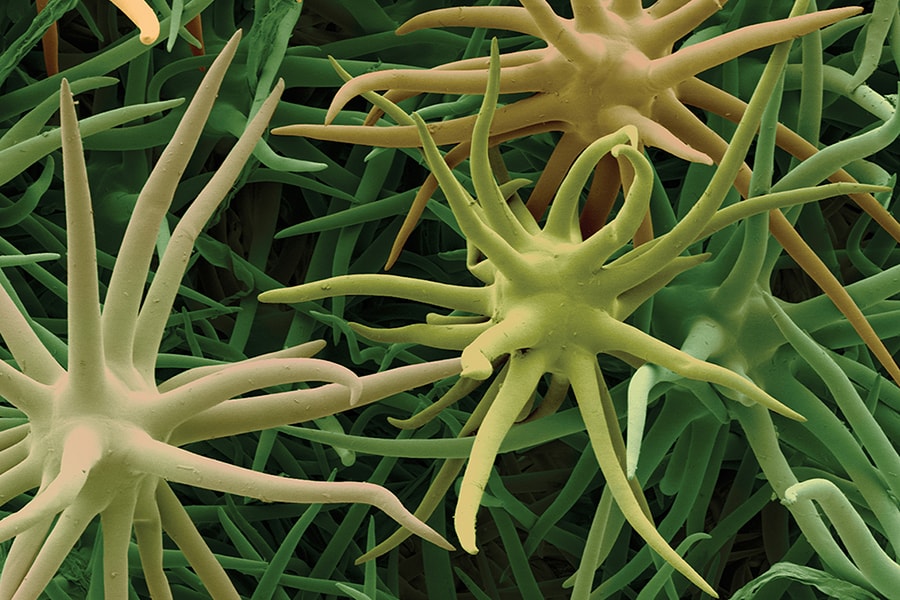
Carnegie Mellon's Miller Gallery, Hunt Institute Host "Worlds Within"
By Margaret Cox
Media Inquiries- Hunt Institute for Botanical Documentation
- 412-268-2434
- Miller Gallery
- 412-268-4754
"Worlds Within," the first collaboration between Carnegie Mellon University's Hunt Institute for Botanical Documentation and Miller Gallery exposes the unseen world of plants and their internal architecture, textures, patterns and functions. The exhibit is co-curated by Lugene B. Bruno, curator of art of the Hunt Institute and John Carson, professor of art in CMU's School of Art. It runs from now through Nov. 12 at the Miller Gallery and Dec. 15 at the Hunt Institute.
The curators said "Worlds Within" reveals repeating patterns in nature: generic structures and forms, which recur on a macro and micro scale.
"The graphic impact of historical instructive botanical wall charts and models alongside monumentalized, hand-colored botanical micrographs by Rob Kesseler creates a remarkable visual bridge between the conventional purpose of scientific illustration as used in educational materials and the aesthetic interpretation of scientific imagery in contemporary art," Bruno said.
The exhibit is in two sections exhibiting botanical micrographs by British artist Rob Kesseler (1951–) alongside botanical wall charts from Carl Ignaz Leopold Kny’s (1841–1916) series "Botanische Wandtafeln" (Berlin, Paul Parey, 1874–1911). Complementing the forms represented in these charts and micrographs is a selection of models of marine organisms made of glass by Leopold Blaschka (1822–1895) and Rudolf Blaschka (1857–1939) and made of glacite by Edwin H. Reiber (1881–1967), loaned by the Carnegie Museum of Natural History.
The work at the Hunt Institute offers a more comprehensive comparison between the micrographs and the historical charts and models while the Miller Gallery exhibition features a fuller range of Kesseler’s recent artwork.
"Both sections of this joint exhibition celebrate the extraordinary aesthetic interrelationships between historically different methods of visually interpreting the wonders of botanical phenomena not readily visible to the naked eye," Carson said.